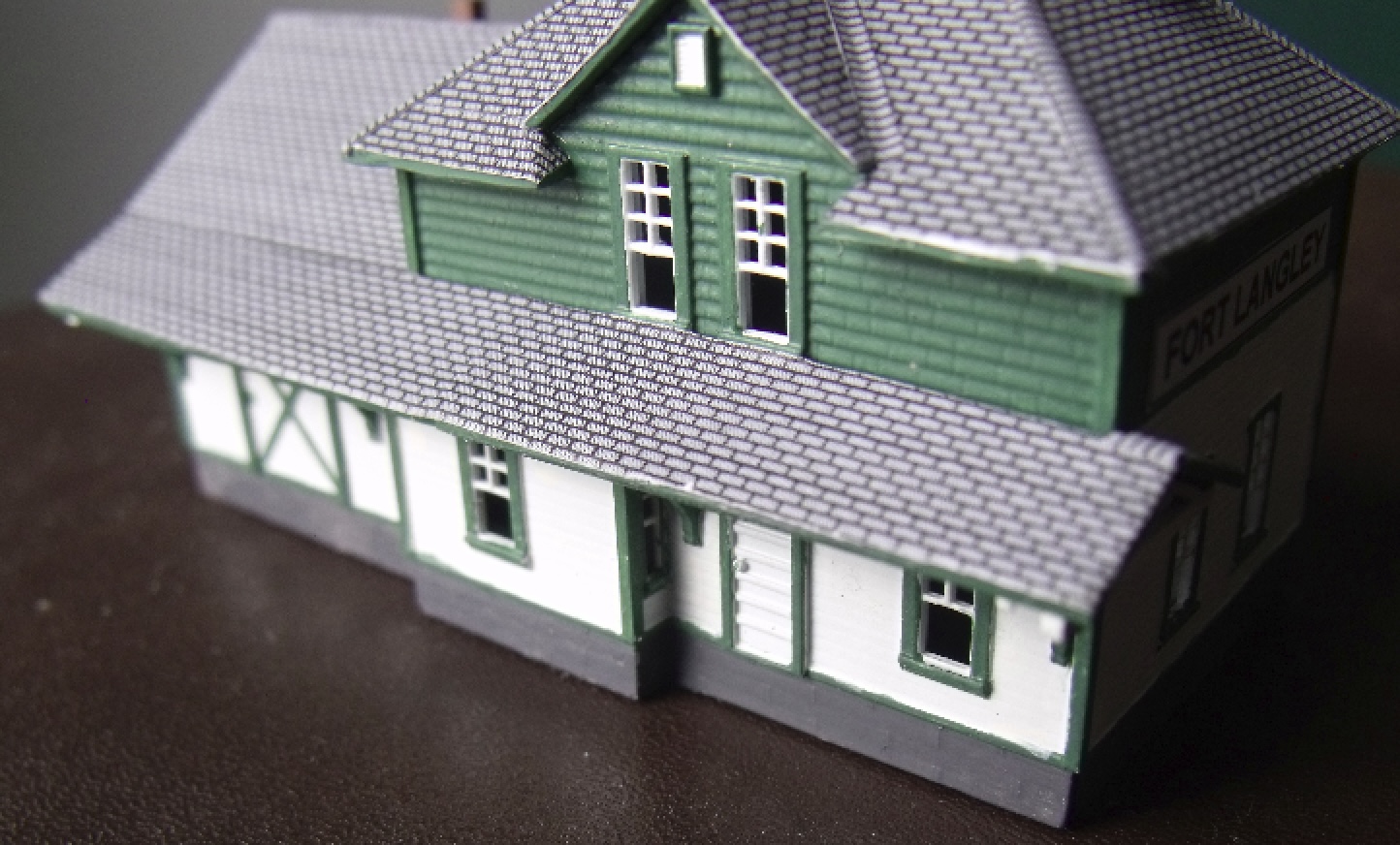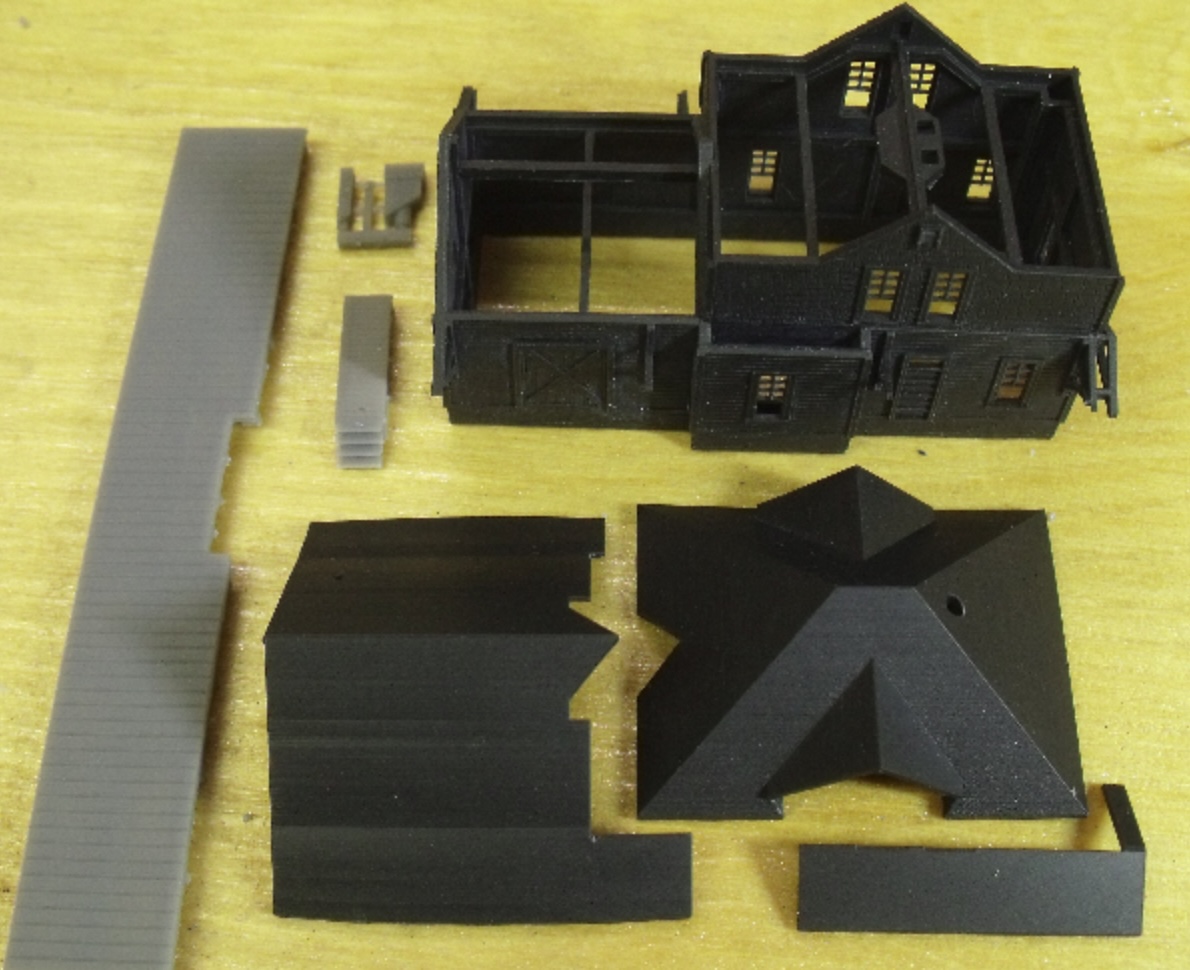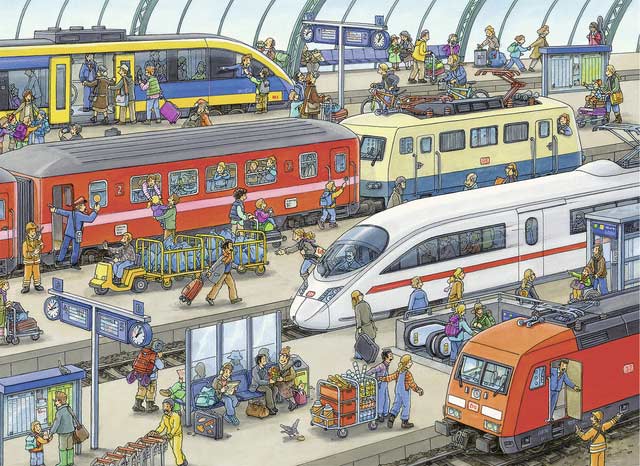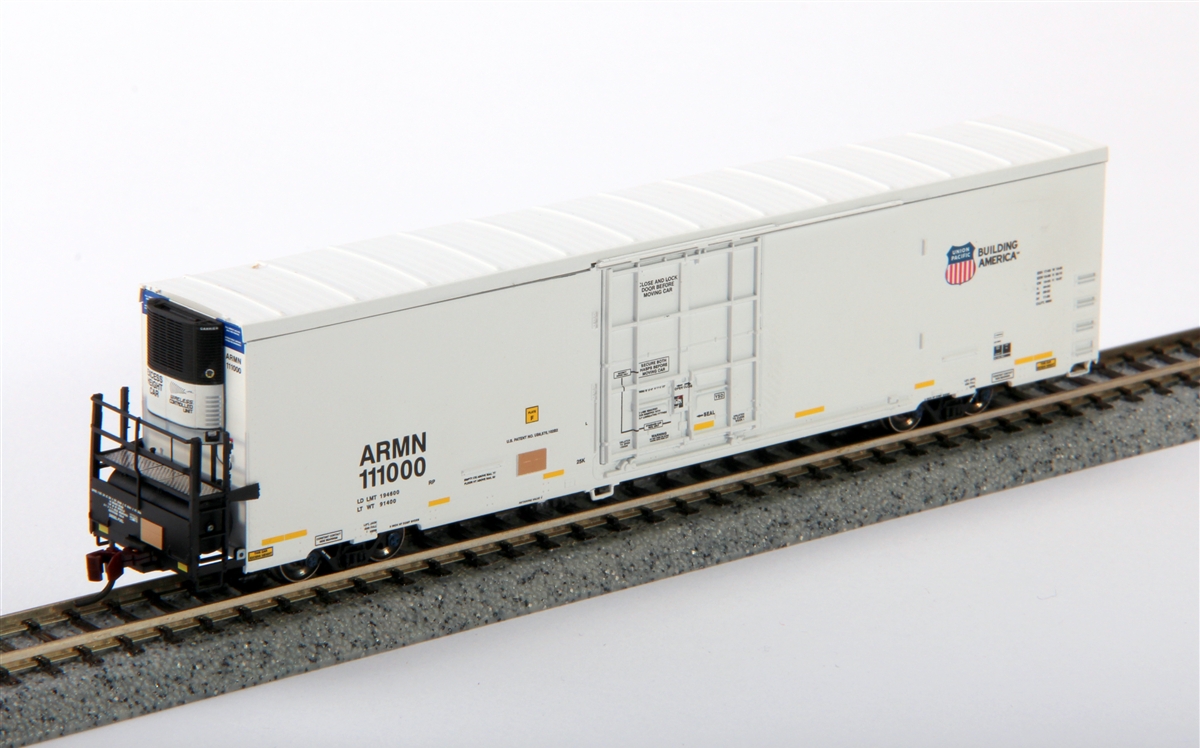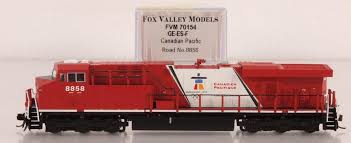Specific Item Information: This kit is a replica of Canadian National Railways (CNR) station in Fort Langley, British Columbia. The station was originally built by the Canadian Northern Railway as one of its third class stations in 1915, as it completed its line from Edmonton to Vancouver. It was originally located about two blocks west of its current location. In 1918, Canadian Northern became part of what is now Canadian National Railway. Canadian National closed the building in the early 1980s and planned to demolish it. However, a concerted community effort resulted in it being moved to a new location and restored in 1983 and 1984 by the Langley Heritage Society. It now sits adjacent to a caboose and passenger car and is a central historic attraction in the town.
The kit includes 8 3D printed parts. The building itself is made using black plastic which is opaque so that light does not bleed through the walls if it has a lighted interior. The kit features a holder built into the roof which fits our IL1 printed circuit board for interior lighting. It also features a wiring conduit to hide the electrical wiring. For more information on our lighting products click here. Also included laser printed roofing and signs.
The kit includes 8 3D printed parts. The building itself is made using black plastic which is opaque so that light does not bleed through the walls if it has a lighted interior. The kit features a holder built into the roof which fits our IL1 printed circuit board for interior lighting. It also features a wiring conduit to hide the electrical wiring. For more information on our lighting products click here. Also included laser printed roofing and signs.
Road Name History: Railroad structures include but are not limited to stations, depots, yard offices, interlocking towers and tanks. A train station, railway station, railroad station, or depot is a railway facility where trains regularly stop to load or unload passengers or freight.
It generally consists of at least one track-side platform and a station building (depot) providing such ancillary services as ticket sales and waiting rooms. If a station is on a single-track line, it often has a passing loop to facilitate traffic movements. The smallest stations are most often referred to as "stops" or, in some parts of the world, as "halts" (flag stops). Stations may be at ground level, underground, or elevated. Connections may be available to intersecting rail lines or other transport modes such as buses, trams or other rapid transit systems.
From Wikipedia
It generally consists of at least one track-side platform and a station building (depot) providing such ancillary services as ticket sales and waiting rooms. If a station is on a single-track line, it often has a passing loop to facilitate traffic movements. The smallest stations are most often referred to as "stops" or, in some parts of the world, as "halts" (flag stops). Stations may be at ground level, underground, or elevated. Connections may be available to intersecting rail lines or other transport modes such as buses, trams or other rapid transit systems.
From Wikipedia
Item created by: CNW400 on 2022-02-07 11:05:42
If you see errors or missing data in this entry, please feel free to log in and edit it. Anyone with a Gmail account can log in instantly.
If you see errors or missing data in this entry, please feel free to log in and edit it. Anyone with a Gmail account can log in instantly.


